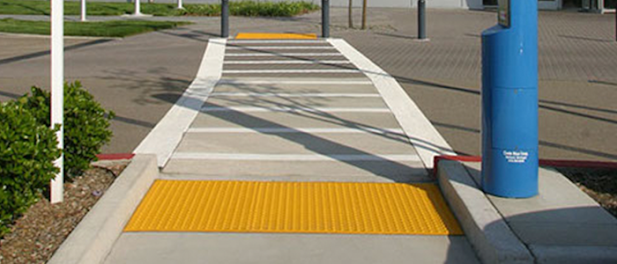Navigating with Confidence: The Role of Cast Iron Tactile Paving in Accessibility
Cast iron tactile paving is a type of tactile paving that is designed to help individuals with visual impairments navigate safely through public spaces. However, its benefits are not limited to those with visual impairments. Cast iron tactile paving can also benefit others, including the elderly, people with mobility impairments, and children who are just learning to walk.
Benefits of Cast Iron Tactile Paving Beyond Accessibility
One of the main advantages of cast iron tactile paving is
its durability. Made from high-strength iron, it can withstand heavy pedestrian
traffic and harsh weather conditions, making it ideal for outdoor public
spaces. Additionally, cast iron tactile paving is slip-resistant, ensuring that
everyone can walk safely on it. This slip-resistant quality is especially
important for individuals with mobility impairments, as it helps prevent slips
and falls.
1.
Cast iron tactile paving can benefit everyone,
not just individuals with visual impairments.
2.
The unique texture and sound of the truncated
domes can help the elderly, people with mobility impairments, and children
navigate public spaces.
3.
Cast iron tactile paving is durable,
slip-resistant, and can withstand heavy pedestrian traffic and harsh weather
conditions.
The unique texture and sound of cast iron tactile paving also make it easy to detect with a cane or underfoot. The evenly spaced truncated domes with a height of 0.2 to 0.35 inches provide a distinct texture and sound that individuals can use to navigate through public spaces with confidence and ease. This feature is especially beneficial for those with visual impairments, who rely on their sense of touch and hearing to navigate through unfamiliar environments.
Cast Iron Tactile Paving: A Cost-Effective and
Easy-to-Install Solution for Public Spaces
Cast iron tactile paving is also cost-effective and easy to
install. It can be installed on a variety of surfaces, including concrete,
asphalt, and pavers, and can be retrofitted onto existing pavements. This makes
it an ideal solution for both new and existing public spaces that want to
enhance accessibility and safety for all individuals.
1.
The installation of cast iron tactile paving is
straightforward and cost-effective.
2.
It can be installed on various surfaces,
including concrete, asphalt, and pavers.
3.
It is possible to retrofit existing pavements
with cast iron tactile paving, making it an ideal solution for both new and
existing public spaces.
In addition to its practical benefits, cast iron tactile paving
also has aesthetic benefits. It can be designed to blend seamlessly with
existing pavement or to create a visually appealing pattern or design. This
means that public spaces can be made more accessible without sacrificing their
overall aesthetic appeal.
Conclusion



Comments
Post a Comment